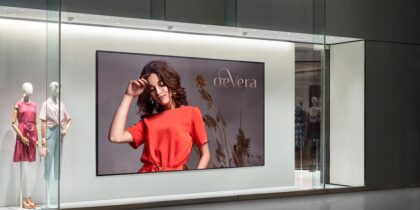As the omnichannel experience raises customer expectations to an all-time high, retailers must create supply chain-based operational efficiencies if they want to maintain strong costumer service. As a result, they are leveraging innovations related to the Internet of Things (IoT) as a means of tightly merging the physical and digital worlds, optimizing supply chain operations and improving the customer experience throughout the value chain.
Omnichannel retailing is adding new complexities to an already competitive environment. Expecting a consistent and personalized experience brand-wide, omnichannel shoppers need their favorite all-channel brands to deliver a seamless, linear path from exploration and browsing through purchase and procurement — regardless of the sequence of channels used from start to finish. It is such a priority that 44 percent of companies are working to expand their unified commerce initiatives over the next 18 months.
However, efforts are in a constant state of flux due to consumers’ continuous adoption of new digital solutions. Add in devices fueled by the IoT, and retail initiatives are taking another new turn — one that is focused on supply chain optimization.
The IoT Paradigm
The IoT is a framework that uses network connectivity to share data between devices via sensors. By adopting IoT within their enterprises, retailers can digitize processes and streamline omnichannel operations. More specifically, retailers are experimenting with ways to use intelligent, connected devices to offer new services, reshape experiences and enter new markets by creating digital ecosystems, as summarized in Accenture’s report, “The Internet of Things: Revolutionizing the retail industry.”
Retailers are so drawn to the platform that the combination of the industrial Internet and IoT devices could add more than $14 trillion to the global economy by 2030, according to a second Accenture report, “Winning with the Industrial Internet of Things.”
One area that stands to benefit most from the IoT movement is the supply chain. Those retailers that can learn how to leverage connected devices to streamline their supply chain operations will be in a stronger position to drive customer satisfaction and achieve long-term success. Some of the operational efficiencies that the IoT can foster include:
Inventory Tracking
By leveraging radio frequency identification (RFID) technologies, retailers can establish more precise inventory tracking across the enterprise.
RFID tags are active tags embedded with electronic product codes (EPCs) or microprocessors that assign a product unique identification numbers that define product-specific information, including an item’s stock keeping unit (SKU) number, style and size. RFID-enabled readers locate tagged merchandise as it moves throughout the enterprise, and report it as available and in stock. Dedicated scanners deployed throughout the supply chain then keep retailers abreast of an item’s movement, including when it’s purchased. Point-of-sale (POS) readers then deactivate the tag, and notify the inventory management system that the merchandise has been purchased and remove it from available stock counts.
RFID tagging is an effective means of accurately tracking inventory levels and merchandise availability, and alerting retailers to replenishment needs.
Replenishment
Jumping off of this concept, RFID-enabled item movement is a main factor driving replenishment efforts. With insight into RFID-tagged merchandise that moves out of the store and into the hands of consumers, replenishment systems are immediately notified, and store replenishment orders are created based on item movement and customer demand.
Taking this process one step further in an increasingly omnichannel world, ship-to-store and buy online, pick up in-store (BOPIS) services can become further optimized through IoT-driven RFID. Associates assisting in-store shoppers now have insight into where merchandise resides within the value chain, when specific merchandise items will be delivered to certain locations, and even specific delivery days.
Pricing
Although pricing may seem like a store-level issue, it’s tightly connected to replenishment initiatives. Using web-based smart tags, chains can more accurately adjust pricing in real time.
Whether responding to promotional or low-turnover items, or increasing pricing on higher-demand items, a fully integrated, IoT-driven pricing system would help retailers synchronize prices between the shelves and POS devices, as well as across channels — ensuring prices are the same online and inside stores.
There’s no doubt that the IoT is still in its infancy, but retailers are exploring the best ways to apply the platform as a means of automating typically cumbersome processes, including tracking, replenishment and price changes. In addition to more tightly integrating the digital and physical realms, IoT-based operations free up associates to engage with customers and further improve the in-store experience.
The Internet of Things isn’t the only new technology that’s helping streamline retail operations. Visit Samsung’s retail page to find the right solution for your company.








